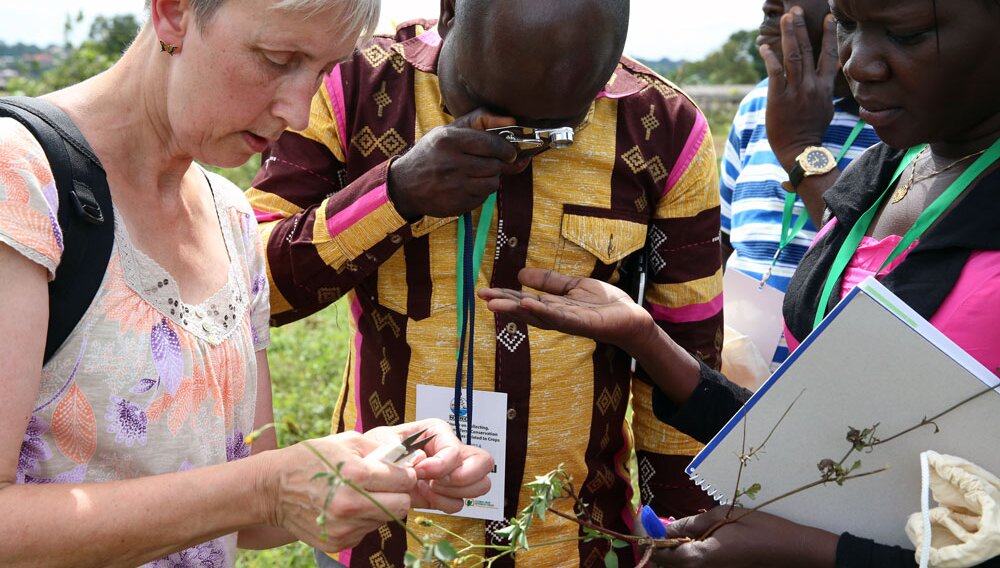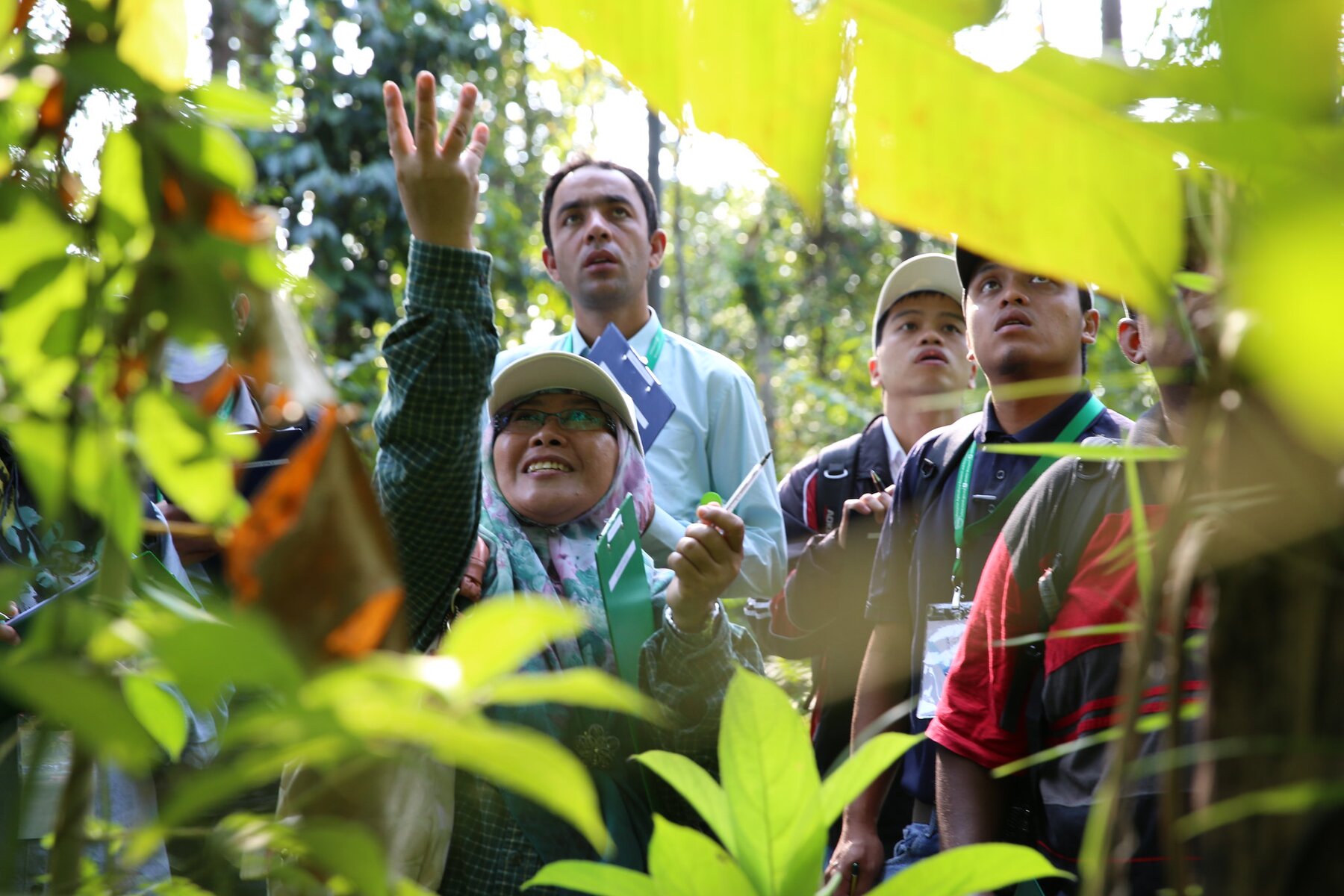Capacity Building
“Our partners are at the front lines of climate change adaptation and mitigation,” states Benjamin Kilian, coordinator of the Crop Wild Relatives (CWR) project. “From the very beginning, the project had a strong emphasis on capacity building, to ensure that our partners had the knowledge, skills and resources they needed to do their jobs to the best of their abilities.”
Capacity building was a key component of all phases of the project, from collecting and conservation to pre-breeding and evaluation. By mid-2021, more than 13,000 people from 124 institutions in 71 countries—37% of them female—had participated in training events supported by the project. This includes more than 10,000 farmers who have been trained in evaluating and selecting the pre-bred lines of crops developed from crosses with the wild relatives. “Only by working together with farmers from the very beginning of the breeding process can we develop climate-resilient crops that will meet both farmer and consumer needs so we can protect farmer livelihoods and ensure food security for all,” says Benjamin Kilian, who manages the CWR project.
During the collecting phase, the Millennium Seed Bank at Kew provided hands-on training to 174 participants from the 25 national partners in seed collecting, cleaning and drying, and in making herbarium specimens, both at Kew and in partner countries—skills that will help continue the CWR project. Training in conservation was complemented with assessments of the information management capacities, needs of partner genebanks and support to 28 national and regional genebanks in Africa, Asia, Latin America, the Near East and North Africa to allow them to upgrade their information management systems and infrastructure. This included an introduction to Genesys — an online platform managed by the Crop Trust that provides access to information about plant genetic resources for food and agriculture conserved in genebanks worldwide, including crop wild relatives — and to GRIN-Global, an open-source genebank data management software.

Hands-on training in collecting and conservation of crop wild relatives in Uganda.
The project also supported a series of Genebank Operations and Advanced Learning (GOAL) workshops to enhance the skills of genebank staff in quality management. These include several such courses supported by the Crawford Fund, an Australian non-profit organization which supports international agricultural collaboration and capacity building in the Asia-Pacific region. Starting in 2015, this partnership delivered annual Master Classes in GOAL in the region, led by Michael Mackay, an associate professor at the Queensland Alliance for Agriculture and Food Innovation at the University of Queensland. These brought together staff from national genebanks in the region. “These workshops provide genebank staff with the tools and skills they need to adopt best practices, and achieve excellence in genebank management, and that means both the seeds and the associated data,” said Janny van Beem, Genebank Quality Management Specialist at the Crop Trust, who was involved in developing and teaching the GOAL workshops.
"Accession documentation and the management of genebank data play a crucial role in efficient operations of any genebank, and effective use of the material maintained in genebanks. Knowing the theory is not enough, that is why we started organizing GOAL workshops on data management for genebanks in 2019,” said Matija Obreza, manager of genebank Information Systems Program at the Crop Trust. The project organized the first GOAL-DM workshop in Vietnam for genebanks of the Asia/Pacific region in collaboration with the Crawford Fund, and the last CWR-funded GOAL-DM in Uruguay for Latin American countries.
One of the lasting contributions of GOAL is the creation of communities of practice in different regions. “These capacity building activities offer us opportunities to meet with our colleagues, to share our experience, and to know we’re not alone,” said Federico Condon, Genebank Manager at Uruguay’s National Agricultural Research Institute (INIA), which hosted a GOAL-DM workshop in December 2019. “It allows us to network and build professional relationships with other women and men who are also searching for the best way to use their limited resources, both human and financial, to conserve our priceless genetic diversity.”
This capacity building, together with the new partnerships the project has developed that span genebanks, plant breeders, farmers and others from both the public and the private sector, provide a lasting legacy for the project, ensuring that the work it has done will continue in safe hands.

